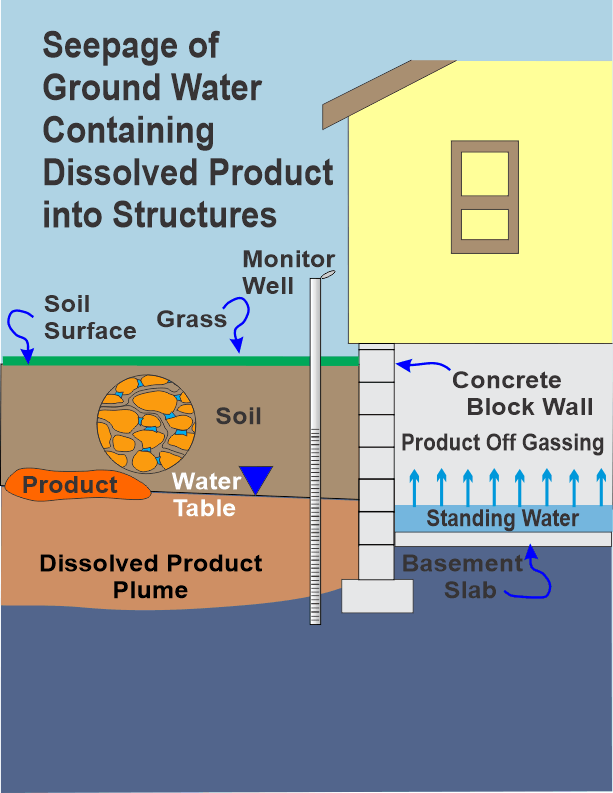
|
 |
 |
earthDr!
"the
environmental ombudsman"
Environmental Justice for All
earthDRx.org - prescriptions (Rx) for
a cleaner environment
|
|
SEEPAGE
OF CONTAMINATED GROUNDWATER (DISSOLVED PRODUCT) INTO A BASEMENT:
causing vapors in a home
|
This figure illustrates
a vapor exposure route into the basement of a home. The product could be
gasoline; and, as it floats on the water table, it continually dissolves
into the groundwater. The contaminated groundwater seeps into the low-lying
basement. The dissolved contaminants then volatilize from these seeps.of
water, contaminating the basement with vapors. Benzene, toluene,
 |
ethyl
benzene, xylene, MTBE (methyl tertiary butyl ether), and TBA (tertiary butyl
alcohol) are some of the contaminants that could be detected if gasoline
vapors have entered your home. This is only one of three routes for generation
of vapors in the basement of your home from the entry of subsurface contaminants.
The other two routes will be depicted later. Also, take note of the elliptical
area to left of the text depicted as "Soil" in this figure. This
area depicts a blowup of a section of soil. Soil particles are depicted
in orange with voids in between them. There will always be voids (known
as pore spaces) between the soil particles, no matter how tightly (densely)
the soil is packed. Voids in soils, such as these, are known as pore spaces.
When these soil pore spaces are below the water table they typically are
completely filled with water. Soil pore spaces above the water table are
filled with various amounts of both water and air. Water content in the
unsaturated zone, those soils above the water table, is ultimately subject
to the weather (precipitation, temperature, relative humidity, and wind
velocity).
TREATISE
- VAPOR GENESIS IN STRUCTURES (CONTINUED)
RETURN
TO HOME PAGE
TREATISE
- VAPOR REMEDY FOR SEEPS OF CONTAMINATED GROUNDWATER
|


